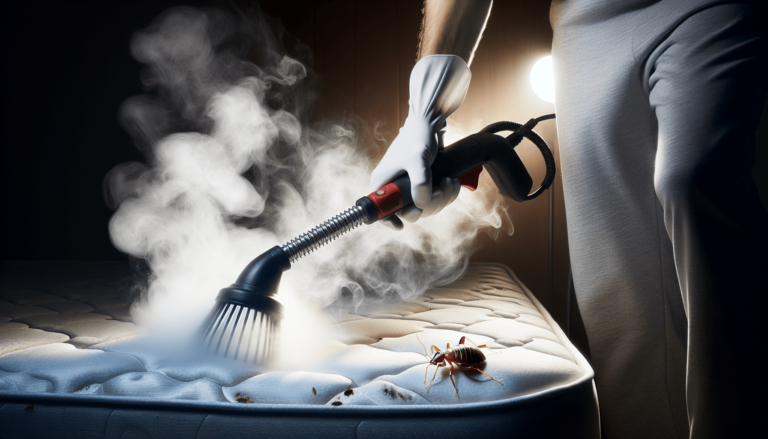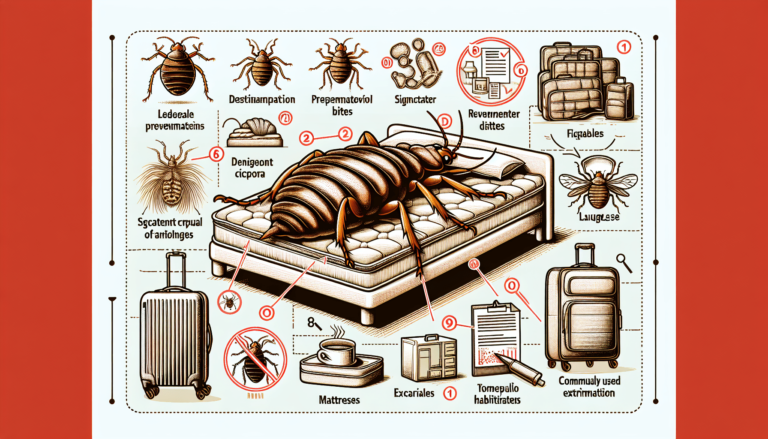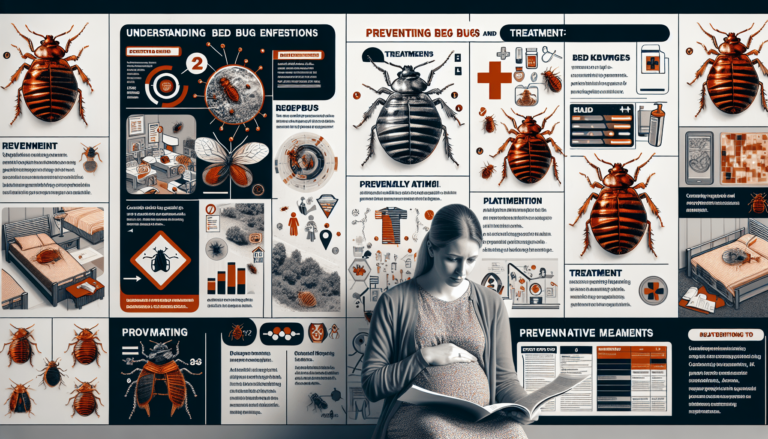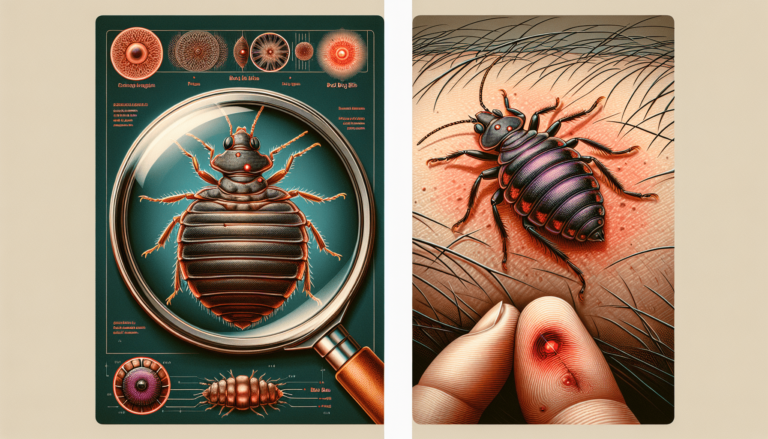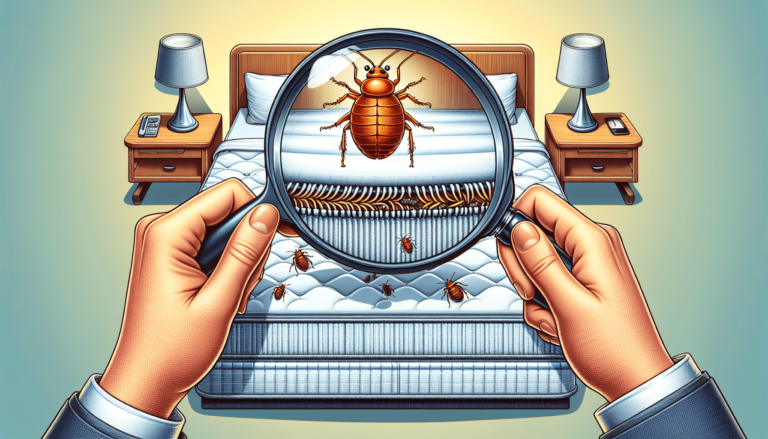Why Do You Get Bed Bugs: Exploring the Causes and Prevention Methods
If you’ve ever woken up with itchy red welts on your body, chances are you may have encountered the unwelcome presence of bed bugs. But what exactly causes these tiny, blood-sucking pests to invade your sleeping sanctuary? In this article, we will delve into the causes of bed bug infestations, exploring the various factors that contribute to their presence in your home. From travel and second-hand furniture to poor sanitation practices, we will uncover the reasons behind these nocturnal nuisances. Furthermore, we will provide you with effective prevention methods to keep your home bed bug-free. So, if the idea of sharing your bed with these persistent critters sends shivers down your spine, read on to discover how you can protect yourself and ensure a peaceful night’s sleep.
What Are Bed Bugs
Bed bugs are small, parasitic insects that belong to the family Cimicidae. They are wingless and have a flat, oval-shaped body with a reddish-brown color. Adult bed bugs can grow up to 5-7 millimeters in length. These pests are nocturnal and feed on the blood of humans and animals for their survival. Bed bugs are known for their ability to hide in cracks and crevices, making them difficult to detect and eliminate.
Description of bed bugs
Bed bugs have a distinct appearance that makes them easily recognizable. They have small, beady eyes and a segmented body with six legs. The nymphs are lighter in color and smaller in size compared to the adult bed bugs. After feeding, their bodies become engorged and their color turns to a darker red. These pests are flat and thin, which allows them to conceal themselves in tight spaces, such as mattress seams, cracks in furniture, and baseboards.
Life cycle and life span of bed bugs
The life cycle of a bed bug consists of several stages: egg, nymph, and adult. Female bed bugs lay eggs in clusters of 1-5 eggs per day, and can produce up to 500 eggs in their lifetime. The eggs are small, around 1 millimeter in length, and are laid in hidden locations. After hatching, the nymphs go through five molts before reaching adulthood. The nymphs require a blood meal at each stage to molt and grow. The entire life cycle of a bed bug, from egg to adult, can take anywhere from 4-7 weeks, depending on environmental conditions.
Common habitats of bed bugs
Bed bugs are highly opportunistic and can adapt to various environments. They are commonly found in areas where humans live and sleep, such as homes, hotels, dormitories, and shelters. These pests prefer to hide in close proximity to their hosts, making beds, sofas, and other upholstered furniture their preferred habitats. However, they can also infest other areas, like baseboards, electrical outlets, and behind wallpaper. It’s important to note that bed bugs can travel and infest new locations by hitching a ride on luggage, clothing, and other personal belongings.
Feeding habits of bed bugs
Bed bugs are strictly hematophagous, meaning they rely on blood meals to survive. They are primarily nocturnal feeders and are attracted to the warmth and carbon dioxide emitted by humans and animals. The bed bugs use their elongated mouthparts to pierce the skin and inject saliva that contains anticoagulant and anesthetic properties. This allows them to feed for several minutes without being detected. After feeding, they retreat to their hiding places to digest the blood meal. Bed bugs can survive for several months without feeding, but they typically feed every 5-10 days.
Health implications of bed bug bites
Although bed bugs are not known to transmit diseases, their bites can lead to various health implications. The bites often result in itchy welts or rashes, which can cause significant discomfort and sleep disturbances. In some individuals, bed bug bites can trigger allergic reactions, ranging from mild irritation to severe allergic responses. Additionally, scratching the bites can break the skin and increase the risk of secondary infections. The psychological impact of a bed bug infestation should also be considered, as it can lead to anxiety, stress, and sleep disorders.
The Causes of Bed Bug Infestation
Bed bug infestations can occur in various settings and are primarily caused by human activities. Understanding the common causes of infestations can help individuals take preventative measures and minimize the risk of encountering these pests.
Travel and hospitality
One of the leading causes of bed bug infestations is travel and hospitality. Bed bugs can easily hitch a ride on luggage, clothing, and other personal items, allowing them to spread from one location to another. Hotels, motels, and other accommodations commonly experience bed bug infestations due to the high turnover of guests. When staying in hotels, it is important to carefully inspect the room for signs of bed bugs and take precautions to prevent bringing them back home.
Second-hand furniture and flea markets
Bringing second-hand furniture into the home without proper inspection can introduce bed bugs into the living space. Bed bugs are known to infest upholstered furniture, mattresses, and bedding materials. Purchasing used furniture from flea markets or online platforms increases the risk of acquiring bed bug infested items. Before bringing any second-hand items into your home, it is crucial to thoroughly inspect and treat them if necessary.
Multifamily housing and close living spaces
Living in multifamily housing, such as apartments or condominiums, can increase the risk of bed bug infestations. Close living quarters make it easier for bed bugs to move from one unit to another through shared walls, electrical outlets, and pipes. Infestations can quickly spread throughout the building if not addressed promptly. Poor hygiene and cleaning practices within the building can also contribute to the proliferation of bed bugs.
Lack of hygiene and cleaning
Bed bugs are not attracted to dirt or filth but can thrive in unclean environments. Clutter and debris provide hiding places for bed bugs, making it harder to detect and eliminate infestations. Poor hygiene practices, such as infrequent laundering of bedding or neglecting regular cleaning routines, can create conditions conducive to bed bug infestations. Maintaining a clean and clutter-free living environment is crucial in preventing bed bug infestations.
Public transport and shared amenities, like laundromats
Public transportation and shared amenities, such as laundromats, provide opportunities for bed bugs to spread. These pests can easily hitch a ride on clothing, bags, or other personal belongings, allowing them to move from one location to another. Communal spaces like laundromats can be infested with bed bugs if proper cleanliness and hygiene measures are not upheld.
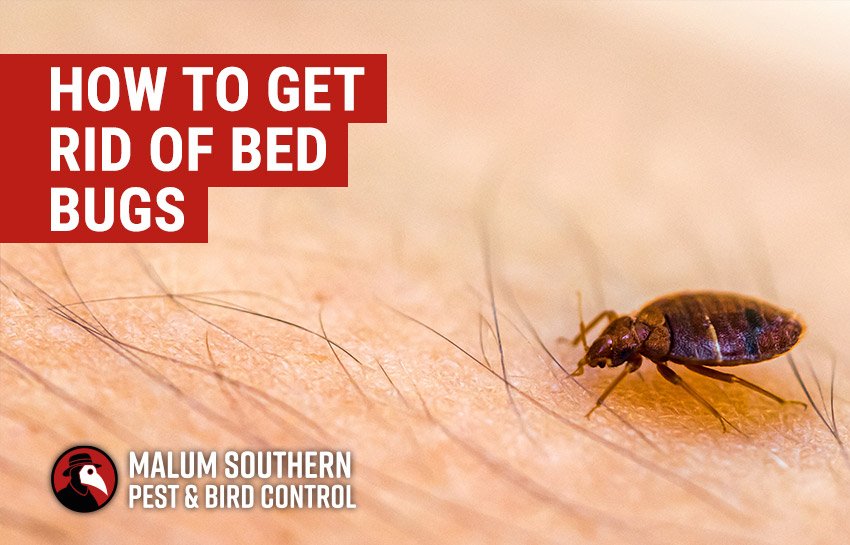
This image is property of malumltd.co.uk.
Behaviors that Increase Risk of Bed Bug Infestation
Certain behaviors and lifestyle choices can increase the risk of encountering bed bug infestations. Understanding these risk factors can help individuals take preventative measures and reduce the likelihood of infestations.
Frequent traveling
Frequent travelers are more likely to come into contact with bed bugs and unknowingly transport them to their homes. Staying in hotels, motels, or other accommodations increases the risk of encountering bed bug-infested rooms. It is essential for travelers to inspect their accommodations for signs of bed bugs and utilize protective measures to prevent bringing them back home.
Buying and utilizing second-hand items
Purchasing second-hand items without thorough inspection can introduce bed bugs into the home. Used furniture, clothing, and other items may harbor hidden bed bug infestations, especially if obtained from flea markets or online platforms. Individuals should carefully inspect and treat any second-hand items before bringing them indoors.
Neglecting regular home cleaning
Poor hygiene and infrequent cleaning routines can create an environment conducive to bed bug infestations. Cluttered spaces provide numerous hiding spots for bed bugs and make detection and elimination more challenging. Regular cleaning, including vacuuming, laundering bedding, and decluttering, can help prevent infestations and detect them at an early stage.
Living in shared accommodations or densely populated areas
Living in shared accommodations, such as dormitories or multifamily housing, increases the risk of bed bug infestations. Close living quarters and shared amenities provide opportunities for bed bugs to spread from one unit to another. Densely populated areas with high turnover rates and frequent guests, such as hotels or hostels, are also prone to infestations. Taking precautions in shared living spaces and practicing good hygiene can help minimize the risk.
Recognizing Bed Bugs
Identifying bed bugs and their presence is crucial in preventing and managing infestations. By recognizing the physical characteristics of bed bugs and understanding the signs of an infestation, individuals can take timely action to address the problem.
Physical characteristics of bed bugs
Bed bugs have distinct physical characteristics that set them apart from other insects. They have flat, oval-shaped bodies and are about the size of an apple seed. Bed bugs are reddish-brown in color, but they become darker and more elongated after feeding. They have six legs, small antennae, and can move quickly.
Signs of a bed bug infestation
There are several signs to look out for to determine if a space is infested with bed bugs. These include:
- Dark or rusty stains on bedding or nearby furniture, which are caused by bed bug excrement.
- Small, red spots on bedding or upholstery, resulting from bed bug bites.
- Shed skins or exoskeletons, as bed bugs molt several times during their life cycle.
- Foul, musty odor, emitted by bed bugs’ scent glands.
- Live bed bugs, particularly in areas where they hide, such as mattress seams, cracks in furniture, or baseboards.
Common places to find bed bugs
Bed bugs are adept at hiding and can occupy various locations within a living space. Common places to find bed bugs include:
- Mattresses, particularly along the seams and in crevices.
- Box springs and bed frames, where bed bugs can easily hide.
- Upholstered furniture, such as sofas, chairs, and cushions.
- Cracks and crevices in walls, baseboards, and electrical outlets.
- Luggage, backpacks, and other personal belongings, especially after traveling.
Identifying bed bug bites
Bed bug bites can vary in appearance and may resemble other insect bites or skin conditions. They typically appear as small, red welts in groups or clusters. Bed bug bites tend to be itchy and can cause irritation. However, it’s important to note that not all individuals react to bed bug bites, and some people may not develop any visible signs of a bite. If you suspect bed bug bites, it is advisable to consult a healthcare professional for appropriate diagnosis and treatment.
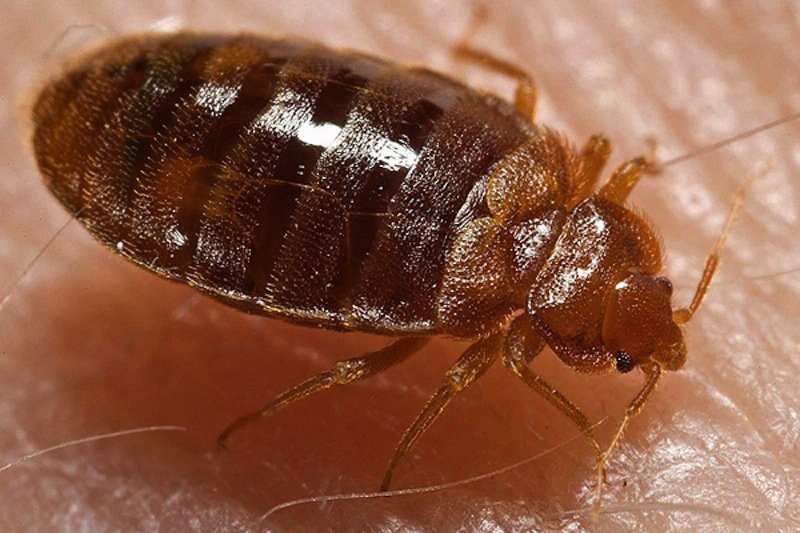
This image is property of cdn.mos.cms.futurecdn.net.
The Misconceptions about Bed Bugs
There are several misconceptions surrounding bed bugs that can lead to misunderstandings and ineffective methods of prevention and treatment. Understanding the truth behind these misconceptions is crucial in addressing bed bug infestations effectively.
Misunderstanding around spread and transmission
Contrary to popular belief, bed bugs do not fly or jump. They are primarily spread through human activities, such as traveling or bringing infested items into the home. Bed bugs can crawl or hitchhike onto clothing, luggage, or other personal belongings, allowing them to move from one location to another. It’s important to note that cleanliness or personal hygiene does not prevent bed bug infestations, as these pests can infest clean homes or hotel rooms.
Myths about bed bug infestation causes
There are various myths and misconceptions about the causes of bed bug infestations. One common myth is that bed bugs only infest dirty or unsanitary homes. However, bed bugs are opportunistic pests and can infest any living environment, regardless of cleanliness. Another common myth is that bed bugs are attracted to blood that is high in sugar. In reality, bed bugs are attracted to the carbon dioxide, warmth, and body odor emitted by humans and animals.
Common misinformation about bed bug removal
Numerous home remedies and DIY methods claim to eliminate bed bugs effectively. However, many of these methods are ineffective and may even worsen the infestation. These include using natural ingredients such as essential oils or vinegar, applying heat or cold treatments, or using over-the-counter pesticides. Proper bed bug elimination requires a comprehensive and targeted approach, often involving the expertise of a professional pest control service.
Debunking the claim that bed bugs only infest dirty homes
One of the most pervasive misconceptions about bed bugs is that they only infest dirty or unsanitary homes. Bed bugs do not discriminate based on cleanliness, and infestations can occur in any living environment. These pests are attracted to the warmth and carbon dioxide emitted by their hosts, regardless of the cleanliness of the surroundings. It is important to prioritize prevention measures and regular inspections, regardless of the cleanliness of the living environment.
Health Consequences of Bed Bug Bites
Bed bug bites can have various health consequences, ranging from physical discomfort to psychological distress. Understanding these implications can help individuals recognize the importance of preventing and addressing bed bug infestations promptly.
Physical impact of bed bug bites
Bed bug bites typically result in small, raised welts or bumps on the skin. These bites are often itchy and can lead to scratching, which can cause skin irritation and potential infection. In some cases, individuals may experience an allergic reaction to the bed bug’s saliva, resulting in more severe skin reactions. The physical impact of bed bug bites can vary from person to person, with some individuals experiencing milder symptoms and others experiencing more severe discomfort.
Potential allergic reactions
While bed bugs are not known to transmit diseases, some individuals may develop allergic reactions to their bites. Allergic reactions can range from mild to severe and may include symptoms such as excessive swelling, blistering, or difficulty breathing. If an allergic reaction is suspected, medical attention should be sought immediately.
Psychological effects of a bed bug infestation
The presence of bed bugs in a living space can have significant psychological effects on individuals. The fear and anxiety associated with bed bug infestations can lead to sleep disturbances, stress, and a decline in mental well-being. The constant worry of being bitten and the stigma associated with bed bugs can also impact an individual’s social life and overall quality of life.
Secondary infections from scratching bites
Scratching bed bug bites can break the skin and increase the risk of secondary infections. Open wounds from scratching provide an entry point for bacteria, which can lead to infections. It is important to avoid scratching bed bug bites and to keep the skin clean to minimize the risk of infection. If signs of infection, such as increased redness, swelling, or pus, develop, medical attention should be sought.
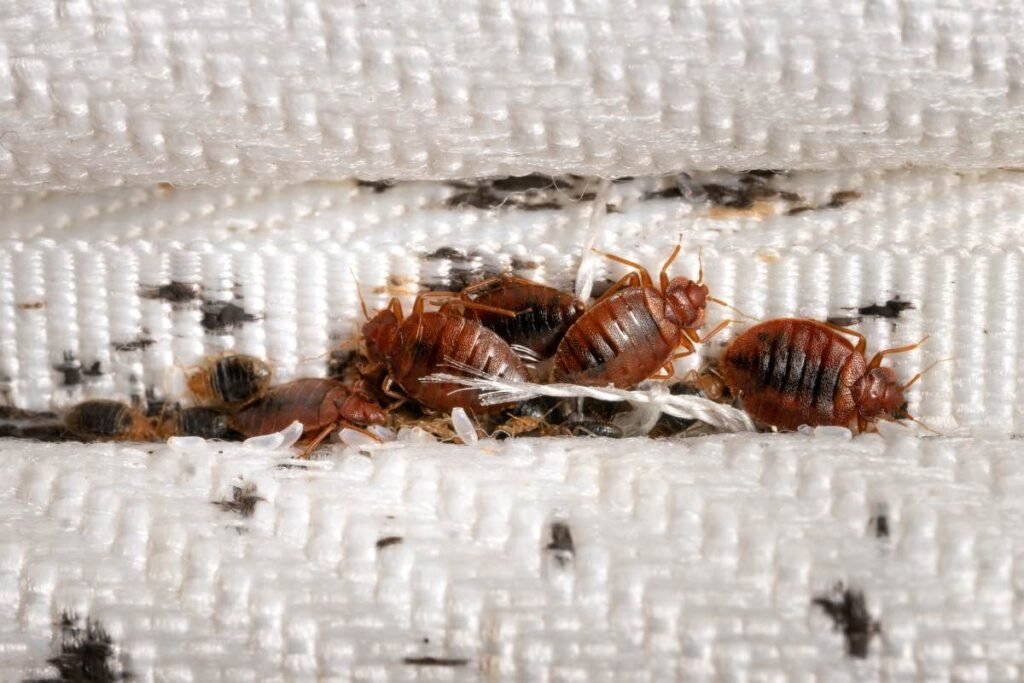
This image is property of www.planetnatural.com.
Methods for Preventing Bed Bug Infestation
Prevention is crucial in minimizing the risk of bed bug infestations. By implementing preventive measures, individuals can reduce the likelihood of encountering these pests and the associated health and financial implications.
Regular and thorough cleaning routines
Maintaining a clean and clutter-free living environment is essential in preventing bed bug infestations. Regularly vacuuming carpets, rugs, and upholstery can help remove bed bugs and their eggs. Laundering bedding, linens, and clothing at high temperatures can also kill any bed bugs or eggs present. Additionally, sealing cracks and crevices in walls and furniture can reduce hiding places for these pests.
Procedures for handling second-hand items
When acquiring second-hand items, such as furniture or clothing, it is crucial to thoroughly inspect them for signs of bed bugs. Carefully examine seams, crevices, and hidden areas, and consider treating the items before bringing them indoors. Washing, steaming, or freezing items can help eliminate any bed bugs or eggs present. It is also advisable to purchase second-hand items from reputable sources and inquire about their history or previous infestations.
Precautions when traveling or staying in hotels
Travelers should take precautions to minimize the risk of encountering bed bugs during their trips. Inspecting hotel rooms for signs of bed bugs, such as dark stains, shed skins, or live bugs, is recommended before settling in. Keeping luggage off the floor and using protective bags or covers can prevent bed bugs from hitchhiking back home. Upon returning from a trip, it is advisable to wash and dry all clothing and vacuum luggage to eliminate any potential hitchhikers.
Importance of early detection and treatment
Early detection and prompt treatment are key in preventing bed bug infestations from spreading and becoming more severe. Regularly inspecting sleeping areas, furniture, and other hiding places for signs of bed bugs helps identify infestations at an early stage. If bed bugs are detected, it is important to seek professional help for effective elimination. DIY methods are often ineffective and can exacerbate infestations.
Procedures for Getting Rid of Bed Bugs
Addressing a bed bug infestation requires a comprehensive approach that involves eliminating the pests and preventing their return. While some individuals may attempt DIY methods, professional pest control services are often the most effective and efficient way to eradicate bed bugs.
DIY techniques and home remedies
Numerous DIY techniques and home remedies claim to eliminate bed bugs. These include using natural ingredients like essential oils, vinegar, or baking soda, or employing heat treatments or freezing methods. While some of these methods may have a temporary effect on bed bugs, they are often insufficient to eliminate infestations completely. DIY methods also carry the risk of spreading or exacerbating the infestation. It is advisable to seek professional assistance for effective bed bug elimination.
Professional pest control: benefits and drawbacks
Professional pest control services specialize in bed bug elimination and offer efficient and effective solutions. These professionals have the knowledge, experience, and tools to identify and treat infestations correctly. Professional services often include a combination of techniques, such as insecticide treatments, heat treatments, or steam treatments, to eradicate bed bugs. However, professional services can be costly, and multiple treatments may be required for complete elimination. It is essential to choose a reputable and licensed pest control provider.
The process of heat treatment for bed bugs
Heat treatment is a popular method for bed bug eradication and involves raising the ambient temperature of the infested area to a level that is lethal to the pests. Specialized equipment is used to heat the room or items to temperatures between 120-140°F (48-60°C) for a sustained period. This method effectively kills bed bugs at all life stages, including eggs. However, heat treatment requires professional expertise to ensure proper application and to avoid damage to sensitive items or structures.
The role of pesticide in bed bug elimination
Pesticides can be used as part of a comprehensive bed bug treatment plan. Insecticide treatments target active infestations and can help eliminate bed bugs. However, the use of pesticides should be handled by professionals trained in their safe and effective application. It is crucial to follow all instructions and recommendations provided by the pest control provider to ensure the safety of occupants and the environment.

This image is property of cdn.branchcms.com.
Preventing Recurrence of Bed Bugs
After successfully addressing a bed bug infestation, it is important to take preventive measures to avoid a recurrence. Implementing long-term changes to personal habits and home arrangement can help minimize the risk of reintroducing bed bugs into the living environment.
Continuing cleaning protocol after infestation
Maintaining a regular cleaning routine and good hygiene practices is essential in preventing bed bug infestations. Regularly vacuuming carpets, rugs, and upholstery helps remove any stray bed bugs and their eggs. Laundering bedding, linens, and clothing at high temperatures can also kill any bed bugs or eggs present. Continuously sealing cracks and crevices in walls and furniture reduces hiding places for these pests.
Awareness and procedures for return travel
When returning from travel, it is important to follow specific procedures to prevent bed bugs from hitchhiking back home. Carefully inspecting luggage, clothing, and personal belongings for signs of bed bugs is crucial before bringing them indoors. Washing and drying all clothing on high heat can help eliminate any potential hitchhikers. Vacuuming luggage and sealing it in protective covers or bags can also prevent the introduction of bed bugs to the living environment.
Regular monitoring for signs of infestation
Even after successfully eliminating a bed bug infestation, it is important to remain vigilant and monitor for any signs of a resurgence. Regularly inspecting sleeping areas, furniture, and other hiding places for signs of bed bugs helps detect infestations at an early stage. Prompt action can prevent a small infestation from turning into a full-blown infestation.
Long-term changes to personal habits and home arrangement
Implementing long-term changes to personal habits and home arrangement can help minimize the risk of reintroducing bed bugs. These include:
- Avoiding the acquisition of second-hand furniture or items without proper inspection.
- Regularly laundering bedding, linens, and clothing on high heat.
- Sealing cracks and crevices in walls, furniture, and baseboards.
- Keeping clutter to a minimum to minimize hiding places for bed bugs.
- Educating oneself and family members about bed bug prevention and early detection.
Effectiveness and Limitations of Bed Bug Prevention Methods
While there are various methods available for preventing bed bug infestations, each has its own effectiveness and limitations. Understanding these factors can help individuals choose the most appropriate prevention techniques for their specific situation.
Comparing various prevention techniques
Different prevention techniques vary in their effectiveness and suitability for different scenarios. Regular cleaning routines and good hygiene practices are highly effective in minimizing the risk of bed bug infestations. Inspecting and treating second-hand items prior to their introduction into the home can also prevent infestations. However, DIY methods or home remedies often have limited efficacy and may not address infestations comprehensively. Professional pest control services provide the most effective and efficient solutions for infestations.
The role of community awareness and cooperation
Community awareness and cooperation play a crucial role in preventing and managing bed bug infestations. Educating individuals about preventive measures, early detection, and prompt treatment can help reduce the spread of infestations. Cooperation within shared living spaces, such as multifamily housing or dormitories, is essential in preventing the migration of bed bugs between units. By working together, communities can create a more effective defense against bed bug infestations.
Situations where prevention may not work
While preventive measures significantly reduce the risk of bed bug infestations, there are situations where prevention may not be foolproof. Traveling to infested locations or encountering bed bug-infested items despite precautions can introduce infestations into the living environment. Infestations in shared accommodations or neighboring units can also pose challenges to prevention efforts. In such cases, early detection and prompt action are crucial to minimize infestations’ impact.
The impact of urbanization and modern living on bed bug spread
The spread of bed bugs is influenced by various factors, including urbanization and modern living conditions. Increased international travel, shared accommodations, and mobility contribute to the spread of bed bugs across different regions. High-density living, such as apartment complexes or dormitories, provides ample opportunities for bed bugs to migrate and establish infestations. Additionally, increased resistance to common pesticides and changes in pest control practices have also contributed to the resurgence of bed bug populations.
In conclusion, bed bugs are parasitic insects that can cause significant discomfort and health implications. Understanding their behavior, prevention methods, and effective elimination strategies is crucial in managing infestations and minimizing their impact. By implementing preventive measures, practicing good hygiene, and seeking professional assistance when needed, individuals can reduce the risk of bed bug infestations and maintain a pest-free living environment.
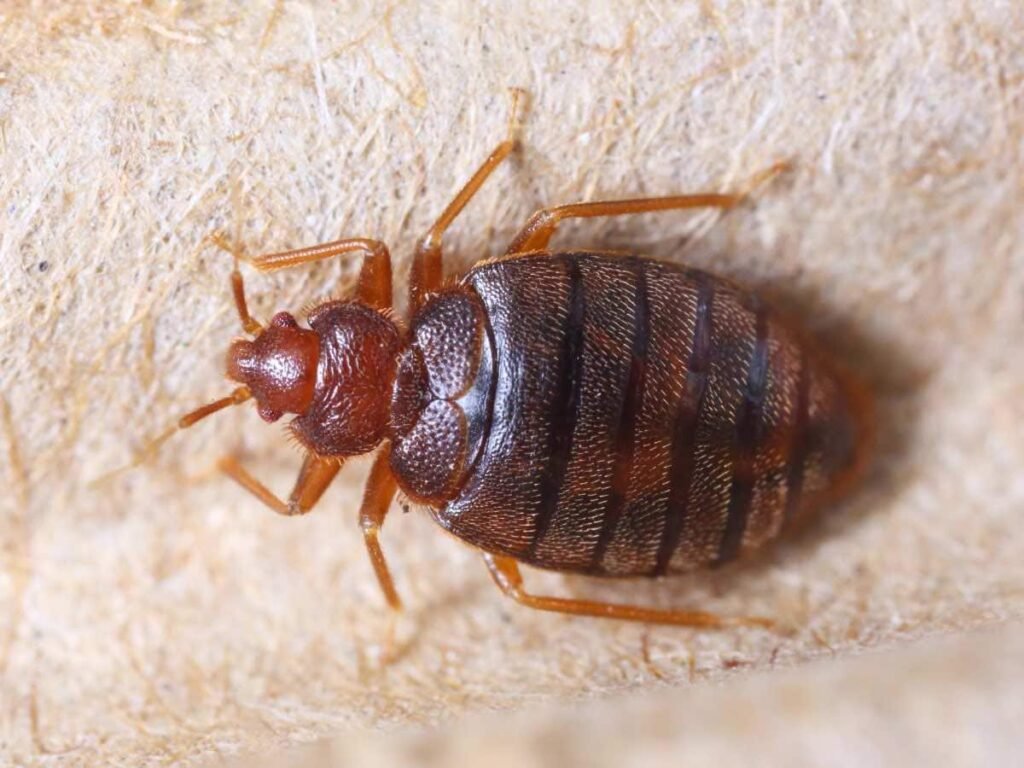
This image is property of www.planetnatural.com.

